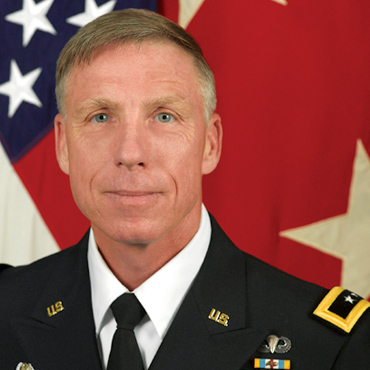Joint Chiefs official blasts cultural resistance to major IT projects

Two of the Pentagon's major IT security initiatives face problems from the ranks, laments Lt. Gen. Mark Bowman.

Lieutenant General Mark S. Bowman is the Director of Command, Control, Communications and Computers / Cyber (C4) at the Pentagon.
Two of the Pentagon's major IT security initiatives face stiff cultural resistance, a key Pentagon official lamented at a June 24 event.
In a blunt tour de force of the state of Defense Department IT security, Lt. Gen. Mark Bowman -- the Joint Chiefs of Staff's director of command, control, communications and computers (J-6) -- declared himself unhappy with progress on command and control of DOD Information Networks (DODIN), and with the Joint Regional Security Stacks, a major cybersecurity initiative. "There's been a lot of talk about progress" with JRSS, Bowman said at an AFCEA D.C. chapter luncheon in Arlington, Va. "A lot of people are happy about where we are. I'm not."
The JRSS project is a collection of servers, switches and software tools meant to give DOD network operators a clearer view of traffic. The stacks are being rolled out gradually to military bases around the world; Joint Base San Antonio was the first to pass live network traffic through the stacks and, according to a Defense Information System Agency official, either Fort Bragg or Fort Hood could be next.
That has not been quick enough for Bowman, however. The JRSS "is a must-do this year, but we got people looking at it and reading the homework and deciding we don't really want to do that," he said. That JRSS requires highly trained experts to deploy is one reason it has taken so long to do so, he said.
The Joint Chiefs official even went as far as to question why the Army and Air Force are apparently on different wavelengths on the project. "Army is behind it; Air Force isn't," Bowman said. "Now why is that? Why can't we get behind it?"
As the JRSS has been deployed, some Air Force personnel have wanted to exert control over parts of the network, Bowman said, adding, "I don't know why. What we really need is end-to-end visibility, and if we got people worrying about what they control and where they are in the network, that's a problem."
Lt. Col. Timothy Kneeland, one of the Air Force officials in charge of JRSS at Joint Base San Antonio, has said he is eager to leverage JRSS's security features, but that there has been a delay in activating them.
Bowman: DISA overburdened
Bowman was similarly direct in providing an update on Pentagon efforts to exert more command and control (C2) over networks. "We're seeing people push back" on those efforts, Bowman said. "People think they own their own network; they don't own any networks. This is all part of the Department of Defense networks, and we need to realize that ... and then act like that."
DISA in January set up Joint Force Headquarters DODIN to boost C2 of DOD networks and take some of that pressure of doing so off of Cyber Command. "They're making strides, but the strides are a little bit too slow," Bowman said. "We need to have better C2 than we have today."
Bowman, a former DISA employee, said he worried that the agency might have too much on its plate right now, what with handling mobile security for DOD and running Joint Force Headquarters DODIN, among other things.
"My concern is: The amount of change for DISA, that is going to be a leadership challenge to the nth degree," he said.
Army Maj. Gen. Alan Lynn will succeed Lt. Gen. Ronnie Hawkins as head of DISA sometime this summer, officials have said.





